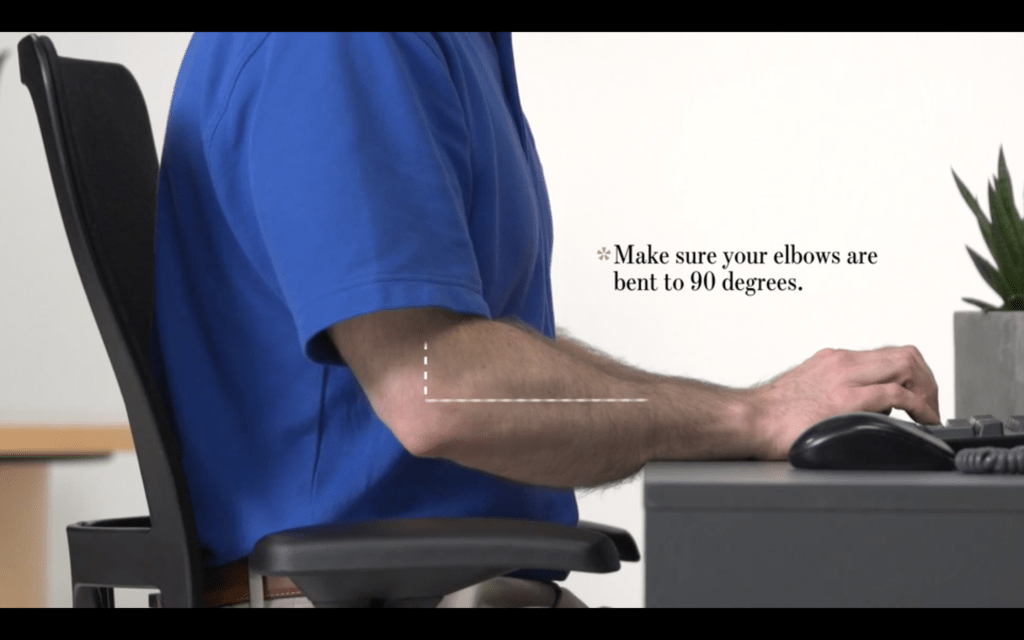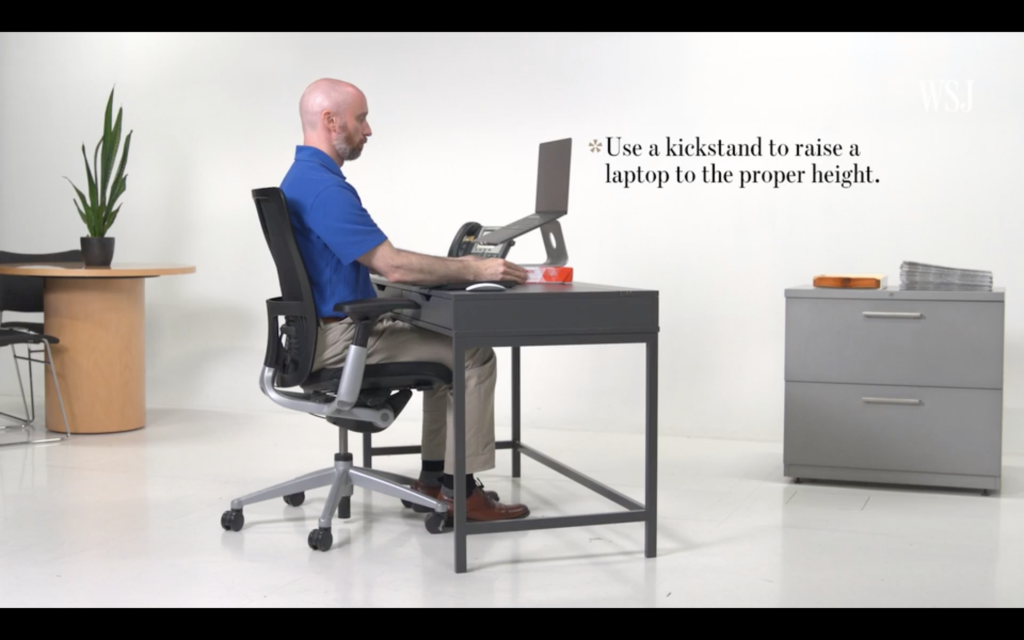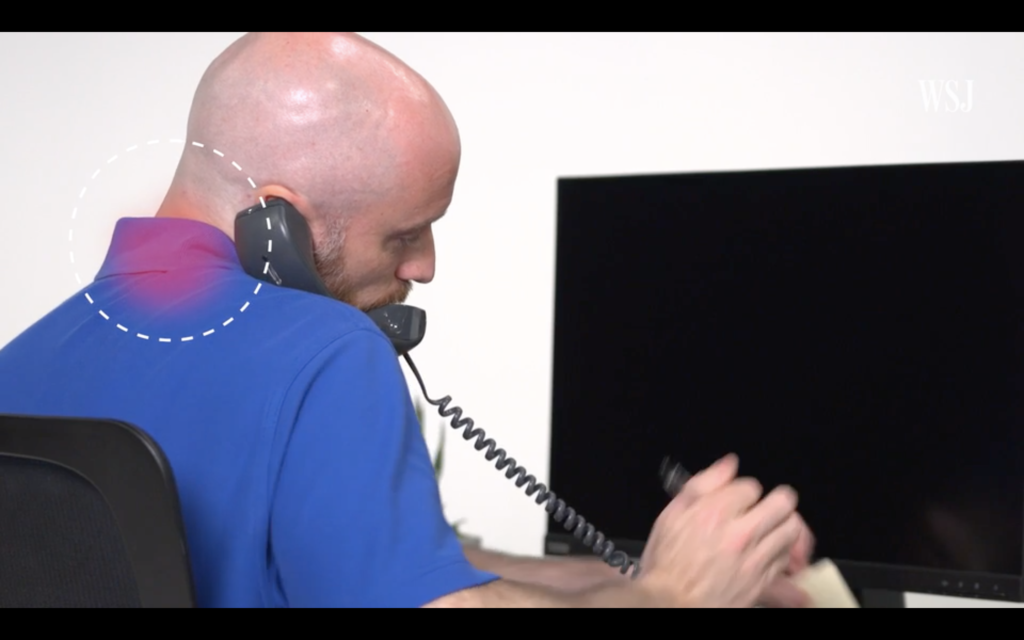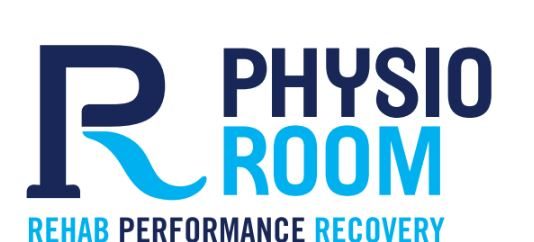Working From Home During Covid-19?
COVID-19 Is changing the way we do business and is changing the space where you work from. If you’re “working from home“ for the first time, then you are not alone. With the new stress of working in a new environment comes new pains and aches that are preventable. Do yourself a favor and set it up properly from the beginning, claim your FREE “work from home” consult.
If you have started slouching on the couch while working, overreaching at the kitchen table, or rounded forward with your head reaching towards the screen, then we should talk about your new “office” space. Our desks were not made for us, they were made for anyone. Dr. Chris, owner of Physio Room, is here to show you how to make your desk adapt to you and not the other way around.
#1 Chair Set-Up
Most desks are set up at 30 inches and will be too tall or too short for some, and we need to adjust the chair height to accommodate. The first thing that you should set up is the chair height to your desk, this allows your elbows to be flexed at 90°. If you have to raise your chair up too high, then you may need a foot rest to keep your feet flat on the floor. Having your feet flat on a surface allows your knees and hips to maintain a 90° bend. Knees and hips bent to 90° allows for a more natural position that will not overly stress your lumbar spine and help prevent low back pain.

The foot rest is what dictates whether or not your hips and knees are at 90°.
#2 Monitor Set-Up
We have all seen that coworker rounded forward like the hunchback of Notre Dame with their chin and head protruding forward getting sucked into their computer screen like a scene out of Poltergeist. Don’t do that.
If you can set your monitor up at eye level and keep the monitor within an arms distance, then you will be able to maintain normal postural alignment. This will reduce the amount of repetitive strain on your neck muscles and allow you to avoid unnecessary headaches and neck pain.

If you are using a laptop, then it would be a good idea to use a kickstand to elevate the screen to eye level and have a remote keyboard to use. If your monitor is too low or too high, then this will put a kink in the spine and create a fulcrum point that will overly stress the cervical spine and create neck pain. This can lead to increased nerve irritation and numbness and tingling.

Dual monitors. If your work requires two monitors, then position yourself to be in the middle of both monitors so you can use your eyes to scan left and right and not have to turn your head significantly to one side or the other. When we see office workers in the PT clinic with neck pain that have dual monitors, we often see the mistake of keeping one monitor directly in front and having the other monitor offset resulting in a slight head turn consistently throughout the day. That leads to a repetitive strain on those tissues and increased risk for irritation and injury.

Mouse and phone position. Keeping the mouse and phone close to you so that you can rotate your arm with your elbow at your side and reach the phone and mouse without reaching from the shoulder.

Proper phone use. If you were going to be on the phone frequently, then it is recommended that you purchase a quality headset. Otherwise, you should hold the phone in your non-dominant hand so that you are able to write information down with your dominant hand. This allows you to write down the information without having your shoulder shrug up into your ear and avoiding unnecessary stress and strain on the nerves and joints in your neck.

#3 Create A Movement Rich Environment
Every 10 to 15 minutes, you will slip back into a default posture no matter how perfect you set up your desk. There is actually no such thing as “good posture”. A “good posture” is a constantly changing posture. We were not designed to sit static for periods of time.
Here are the top 4 desk exercises to perform throughout the day.
#1. Chin Tucks x15 reps and one 30 second hold
#2. Upper Trapezius Stretch – x 60 seconds each side
#3. Scapular Retraction – 15 reps
#4. Pelvic Tilt – x15 rep
#5. Lastly and most importantly, get up, move around, go get a drink of water, and try to get in 10,000 steps per day.
#4 Set Your Desk Up Correctly Today!
As an ergonomic expert and a doctor of physical therapy, I would like to help you set that up. I would like to offer you an absolutely free consult to assess your current “work from home” set up during this Covid Crisis. We can set up a zoom call and look at exactly where you are sitting/standing and provide our feedback on what you could improve.



No responses yet